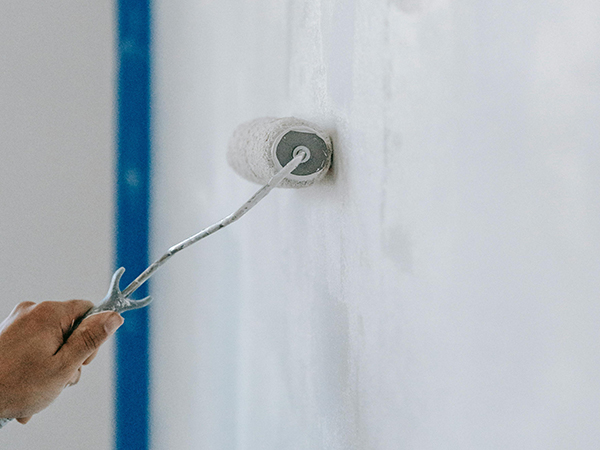What Causes Paint Bubbles and How to Prevent Them
|
Apr 24, 2024 - By the dedicated team of editors and writers at Newsletter Station.

|
Painting is a great way to refresh and enhance the appearance of your home, furniture, or any other surface. However, nothing is more frustrating than seeing unsightly bubbles or blisters forming on your freshly painted surface.
Paint bubbles can ruin the aesthetics of your project and even lead to long-term damage if left unattended. In this blog, we'll explore the common causes of paint bubbles and provide tips on preventing them.
Understanding Paint Bubbles
Paint bubbles are small or large raised areas on a painted surface. They can resemble tiny blisters or be more significant, resembling large pockets of air trapped beneath the paint. These bubbles can form on walls, ceilings, furniture, and exterior surfaces. Understanding what causes paint bubbles is crucial to prevent them effectively.
Common Causes of Paint Bubbles
- Moisture:
One of the primary culprits behind paint bubbles is moisture. Water can seep through surfaces and become trapped between the paint layers. As the moisture evaporates, it creates pressure, causing the paint to lift and form bubbles. Sources of moisture can include leaks, high humidity, and improper surface preparation.
- Poor Surface Preparation:
Properly preparing the surface before painting is crucial. Failing to adequately clean, sand, and prime the surface can result in poor paint adhesion. Paint may not bond properly, leading to bubbles or blisters over time.
- Heat and Sun Exposure:
Extreme heat and direct sunlight can heat surfaces and cause the paint to expand. The paint contracts as the surface cools down, creating tension that can lead to paint bubbles.
- Low-Quality Paint:
Using low-quality or expired paint can increase the likelihood of bubbles. These paints may not have the necessary additives to ensure proper adhesion and durability.
- Painting Over Contaminants:
Painting over surfaces contaminated with dust, dirt, or previous paint that hasn't properly dried can trap foreign particles beneath the new coat of paint. Over time, these particles can cause paint bubbles.
- Applying Thick Coats:
Applying paint too thickly can also result in bubbles. When thick layers of paint dry, the outer layer can harden before the inner layers have fully dried, leading to bubbles as the inner paint releases gases.
- How to Prevent Paint Bubbles
Now that we've explored the common causes of paint bubbles let's discuss how to prevent them:
- Surface Preparation:
Properly prepare the surface by cleaning it thoroughly, removing any loose or peeling paint, sanding rough spots, and applying a suitable primer. A well-prepared surface promotes better paint adhesion.
- Moisture Control:
Ensure that the surface is dry before painting, especially for exterior projects. Repair any leaks or sources of moisture to prevent water from seeping into the paint layers.
- Quality Paint and Tools:
Invest in high-quality paint and painting tools. Quality paints contain additives that improve adhesion and durability, reducing the risk of paint bubbles.
- Paint in Ideal Conditions:
Paint in moderate temperature and humidity conditions, avoiding extreme heat or direct sunlight. This helps the paint dry evenly and prevents the formation of bubbles.
- Thin Coats:
Apply the paint in thin, even coats, allowing each layer to dry completely before applying the next. This prevents the buildup of paint and minimizes the risk of trapped air.
- Avoid Contaminants:
Ensure that the surface is clean and free of contaminants before painting. Remove any dust, dirt, or debris interfering with proper paint adhesion.
Paint bubbles can be frustrating, but with proper surface preparation, quality materials, and attention to environmental conditions, you can prevent them from marring your painting projects.
By understanding the common causes of paint bubbles and following these preventive measures, you can achieve a smooth and professional finish that enhances the beauty of your home or any painted surface.
Unlock the Power of Email Marketing
Harness the potential of email marketing with Newsletter Station. Reach your target audience, drive conversions, and achieve your business goals.
|
More Blogs
| May 8, 2024 |
The Best Way to Choose a Paint Color for Your Home
|
| May 1, 2024 |
Tips for Painting Over Wallpaper: Transforming Your Walls with Ease
|
| Apr 24, 2024 |
What Causes Paint Bubbles and How to Prevent Them
|
| Apr 17, 2024 |
The Best Ways to Use Dark Paint
|
| Apr 10, 2024 |
The Most Relaxing Wall Paint Colors for a Serene Space
|
| Apr 3, 2024 |
Unveiling the Beauty of Wood Siding: Top Tips for Painting
|
| Mar 27, 2024 |
Tips for Painting a Ceiling: Transforming Your Fifth Wall with Ease
|
| Mar 20, 2024 |
When to Use Primer Before Painting: A Guide for Homeowners
|
| Mar 13, 2024 |
A Guide to Choosing the Right Paint Finish
|
| Mar 6, 2024 |
When to Use Color on Your Ceiling
|
| Feb 28, 2024 |
The Right Way to Dispose of Old Paint
|
| Feb 21, 2024 |
Tips for Painting a Front Door
|
|
|
|